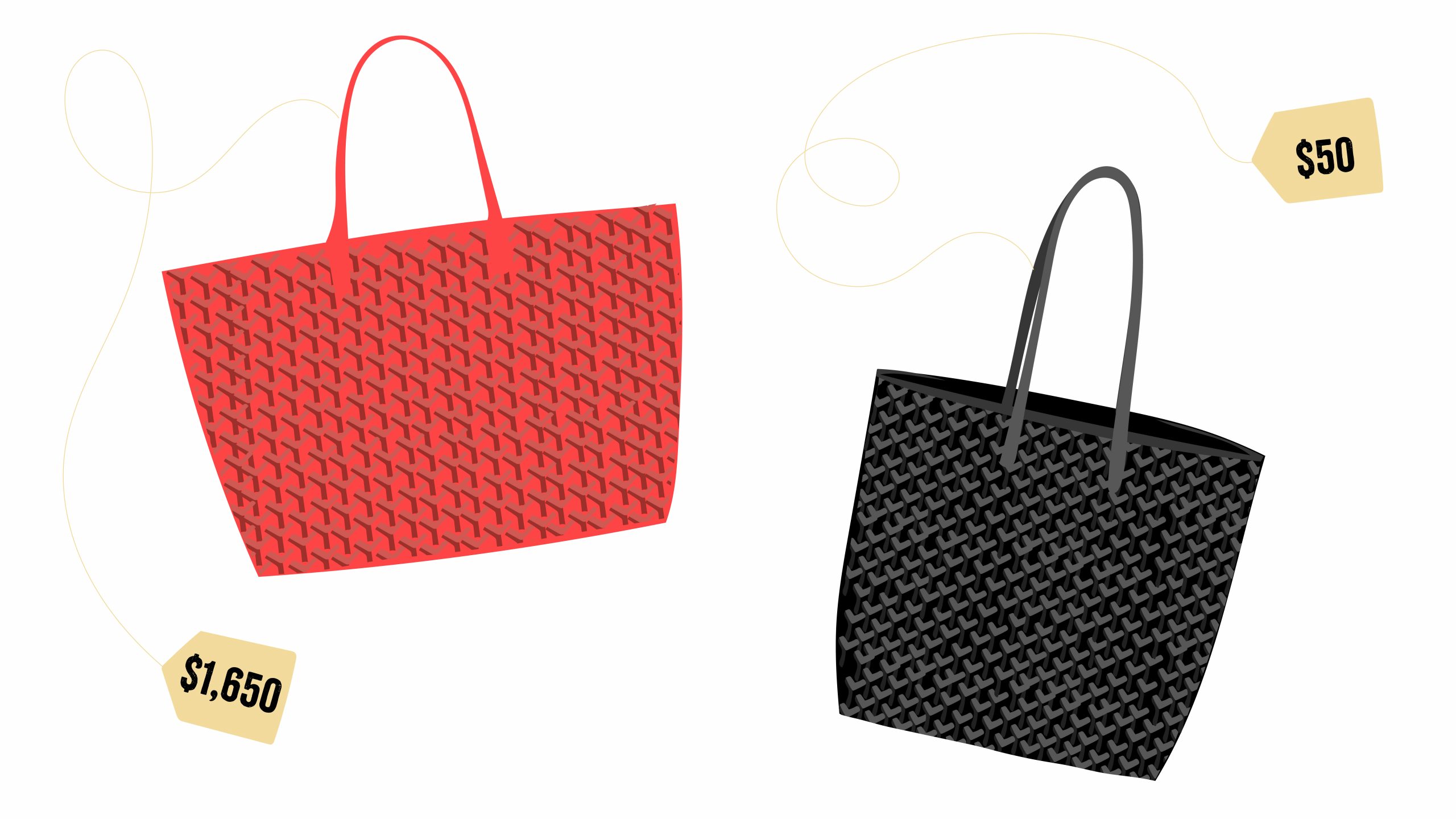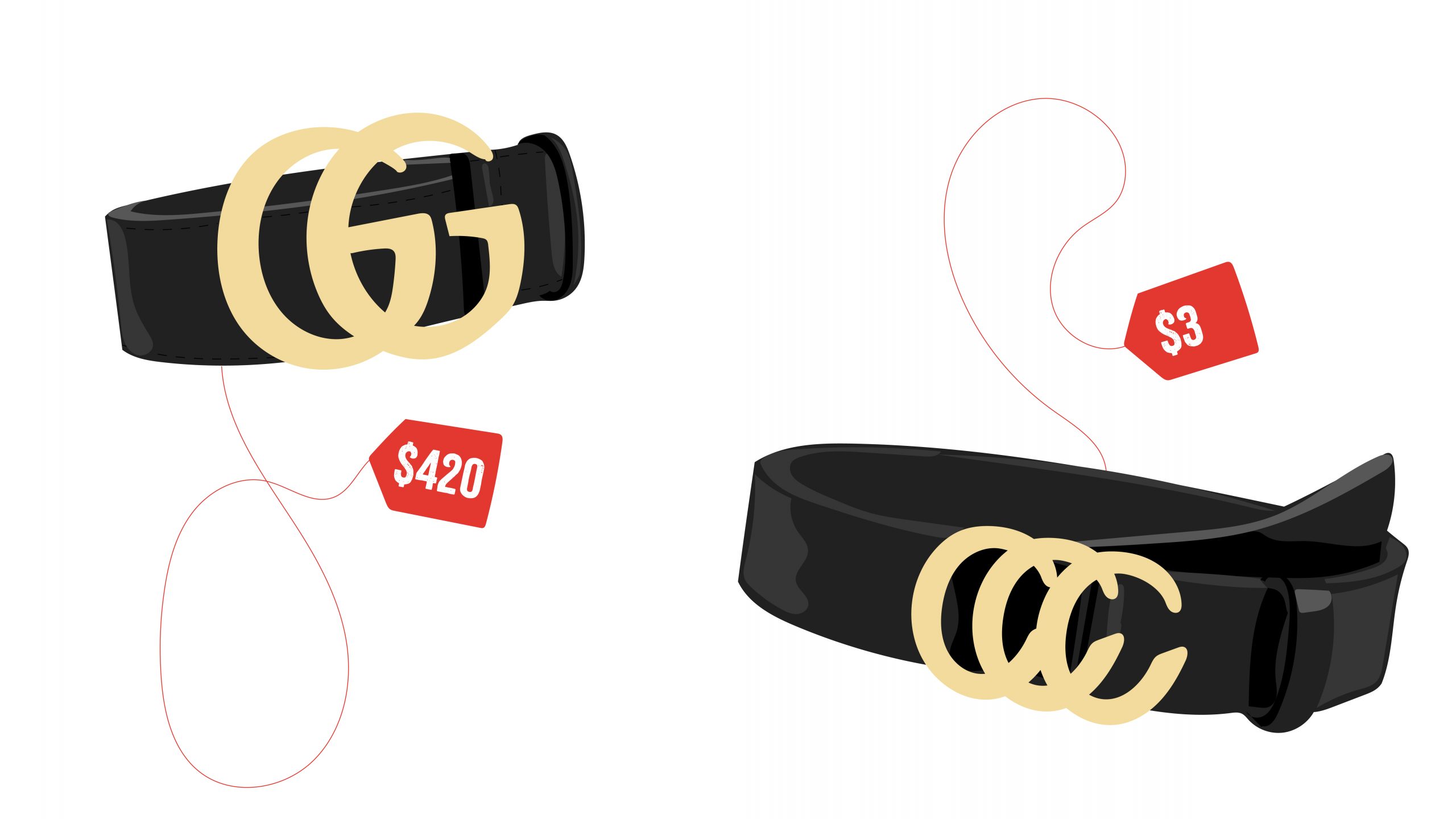
The dupe debate
Is ‘dupe’ just another word for ‘scam’?

hey do not have to be found at the end of a dark alleyway on New York City’s Canal Street or on virus-filled corners of the dark web. Gen Z’s quest for fashionable knockoffs is as easy to find as typing “dupes” into the search bar on TikTok.
“The shadowy business of counterfeits has taken over the globe to become a more than $500 billion industry,” The Fashion Law reported in 2019. Some designers have used collections to showcase dupes such as Gucci shirts with the brand name spelled incorrectly or sending out runway models wearing a fake designer shirt. It seems that rather than fight the counterfeiters, luxury designers have leaned into dupe culture.
Duping is not a new idea: it’s merely a new name for an old trend. Maybe it’s the Gen Z stubbornness of not wanting to admit that we are buying faux items, so we have to put it by another name. Maybe it is the denial that comes with buying something faux and not wanting to admit it. Or maybe Gen Z really thinks it is onto something new. No matter how one defines duping, it seems like it’s here to stay.
As a Gen Zer I am no stranger to TikTok, and duping has been infiltrating my feed for months. The popularity of duping videos on TikTok, usually in the format of a duper showing a designer or brand name item on the screen and then showing a picture of a comparable but cheaper alternative next to it, shows the evergreen nature of duping content.
Olivia Katz, a 25-year-old native New Yorker working in marketing, started her duping journey in middle school when YouTubers started to make dupes for makeup products, and people would review them online.
Over the past two years, TikTok has become the go-to source for her duping hobby because users there are more forthcoming about their recommendations, according to Katz.
“It’s easier to find things, and you don’t really have to do as much legwork on the back end of finding things yourself,” Katz said.

Users such as Maddie Evans, Heidi and Tara Snipes, and Kelly Strack have made names for themselves on social media by advising dupers on how to find the most realistic-looking but affordable dupe items.
Laura Galebe, who graduated from SU last year is a 22-year-old full-time influencer with 24k followers, has witnessed the communal aspect of finding dupes on her TikTok feed. She has found that DHgate has become synonymous with the word ‘dupes.’
Founded in 2004 as a business-to-business e-commerce company, DHgate has become the primary platform for dupe sellers to launch their stores and sell bags, accessories, and clothing that are not explicitly promoted as dupe items but have insignias and similar designs that resemble the real product.
“There are a bunch of people on TikTok who advocate for DHgate,” Galebe said. “What they say is that these products come from the same factories and manufacturers as designer brands, and a lot of the time, the real products and the dupes are actually identical.”
No content explicitly indicates that these dupe items come from the same manufacturers and factories as the real items outside of TikTok speculation and small blurbs on the DHgate sellers page, but the product review videos show striking similarities prove to be enough to entice buyers.
While duping is having a moment now, the truth is, it’s been occurring for years whether as a passing reference in Sex in the City or the marketplace of blankets set up on NYC’s Canal Street. And if anything, the duping business has grown to include sectors it didn’t already cover.
Patrick Penfield, a supply chain professor at Syracuse University’s Whitman School of Management, has owned his antique business for 14 years, and the one thing he says you can expect a lot of is dupes.
“I think there’s more reproduction of all products now than there has been in the past, because there is more profit to be made,” Penfield said.
Penfield thinks there are more dupes than ever before because of consumers’ desire to have what he calls “legitimate reproductions.” Replicas exist because people want the prestige or nostalgia associated with a product at a more affordable cost.
The market for dupes follows this rhetoric. Consumers like Katz are just looking for the best bang for their buck.

“I feel like there’s certain things that I’m okay with sacrificing and buying the dupe version,” Katz said. “If I think that I’m just buying something for the brand name, but it’s the exact same material and hundreds of dollars cheaper, like a bag, then I’m fine to get a dupe, but if I am buying a bag for the quality and not just for the brand name, then I wouldn’t buy a dupe.”
So is duping really just an ethical name for scamming? It depends on who you ask.
Dupers who get a good bang for their buck, and get their fake Chanel bag mistaken for the real thing, then the dupe is doing just what it intended to do, but if you ask Penfield, who spends much of his career making money off the authenticity of items the response would be different.
“There’s just so many reproductions and knockoffs of things that sometimes get really difficult to determine what’s real and what’s not. ”
